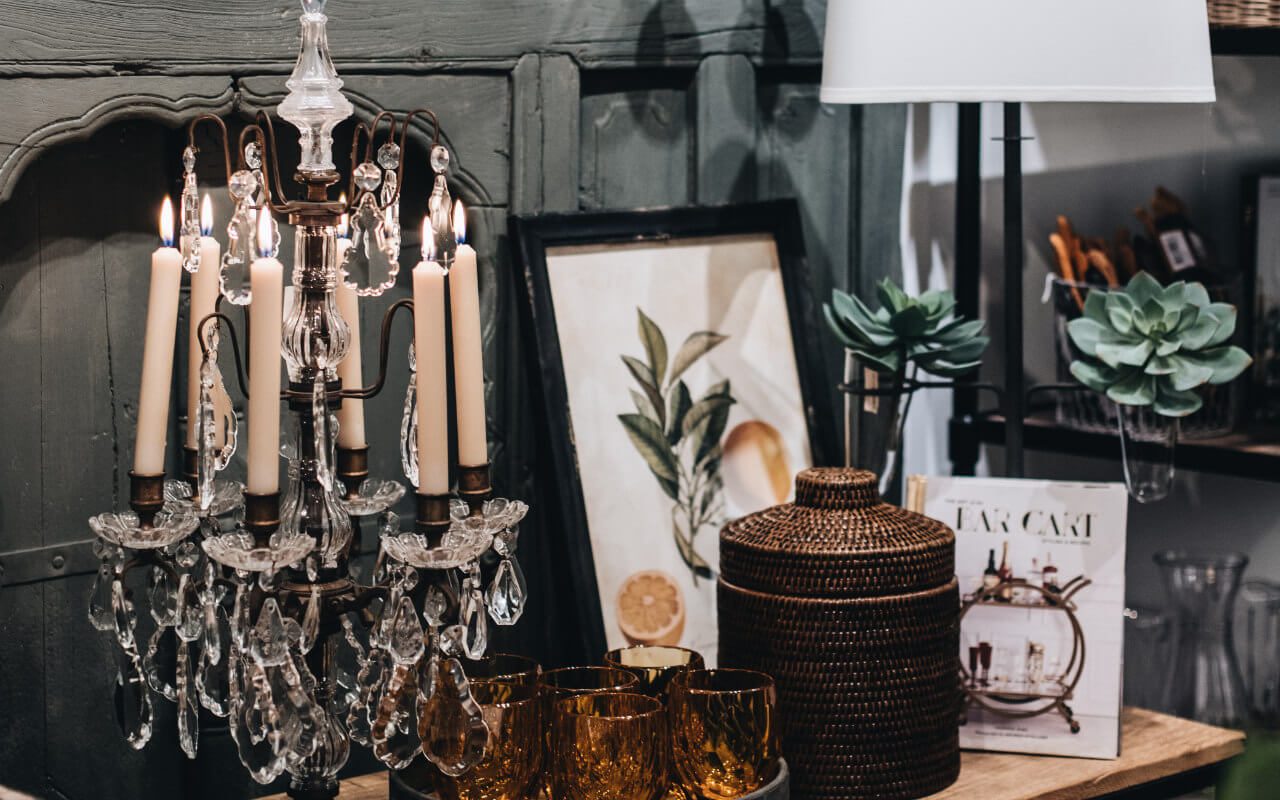Step into the enigmatic world of Dark Academia, where traditional scholarly charm meets modern living. This aesthetic, deeply rooted in classical education and intellectual pursuit, has captured the hearts of those seeking to create spaces that feel both timeless and purposeful.
Think rich wooden bookshelves lined with leather-bound books, vintage maps that spark wanderlust, and the soft glow of brass desk lamps illuminating weathered writing desks.
Whether you’re furnishing a small reading nook or transforming an entire home, Dark Academia offers a sophisticated approach to decorating that celebrates the beauty of learning and contemplation. Through this comprehensive guide, we’ll explore 40 ways to bring this mesmerizing style into your space.
From essential foundational elements to the smallest ephemera, each suggestion is designed to help you craft rooms that feel like they’ve been plucked from a prestigious university’s halls.
Dark Academia Decor Ideas
Let’s discover how to create your own sanctuary of scholarly splendor.
Essential Elements
1. Wall-to-Ceiling Bookshelves

Transform your walls with floor-to-ceiling bookcases that serve as both storage and architectural features. Choose dark wood finishes or paint existing shelves in deep colors that complement your overall scheme. These imposing structures should dominate the room, creating an immersive library atmosphere.
Consider adding a rolling ladder for both functionality and aesthetic appeal. Organize books by color or subject matter, leaving space for decorative objects and artifacts. The key is to create a wall of knowledge that feels both impressive and inviting.
2. Vintage Maps and Charts

Incorporate antique maps, astronomical charts, and botanical illustrations to add scholarly interest to your walls. These pieces serve as both decoration and educational tools, bringing an air of scientific curiosity to your space. Look for pieces with naturally aged patinas and intricate details.
Frame your selections in ornate gold or dark wood frames to enhance their vintage appeal. Create gallery walls mixing different sizes and styles, allowing each piece to contribute to the overall academic atmosphere.
3. Study Corner Setup
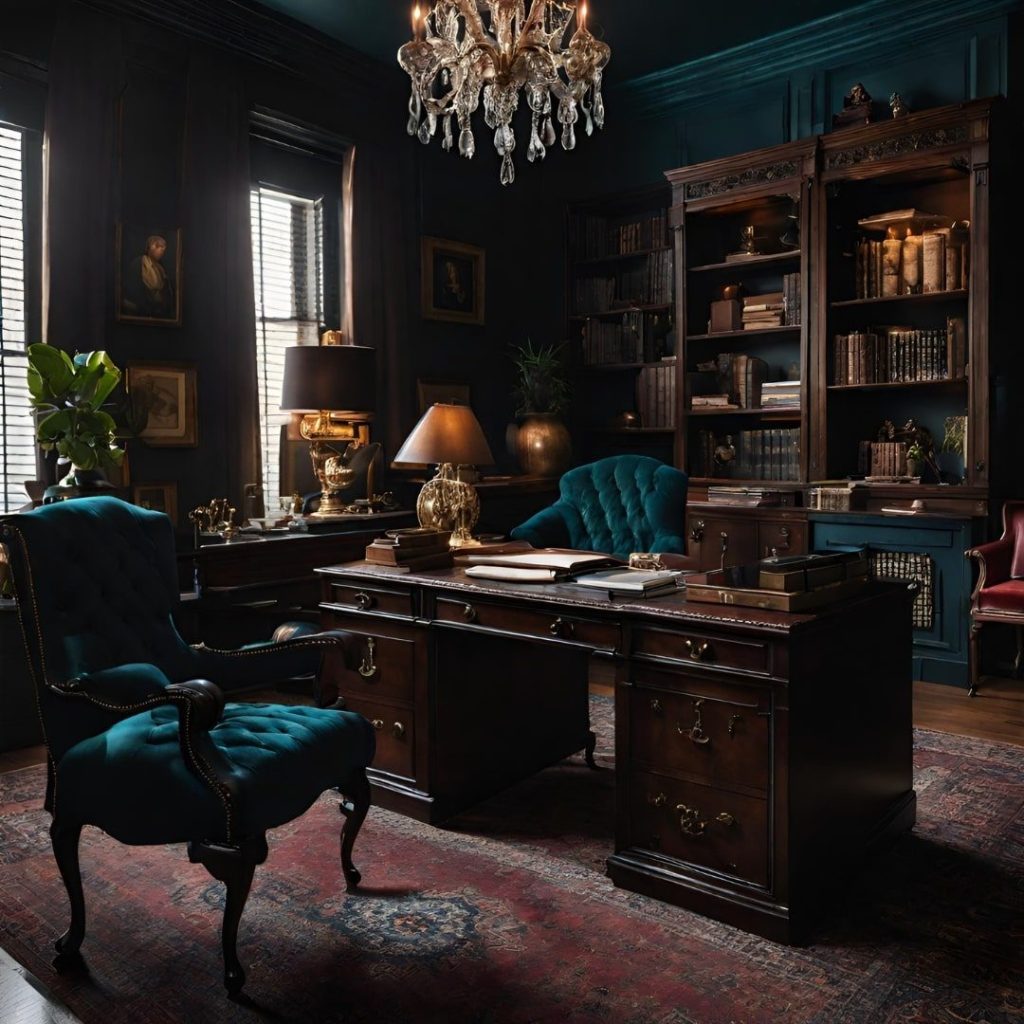
Create a dedicated study nook centered around a vintage desk near natural light. This space should feel like a personal retreat for reading and writing, equipped with essential tools for intellectual pursuit. Choose a substantial desk with character and pair it with a comfortable, period-appropriate chair.
Add ambient lighting through brass desk lamps or wall sconces, and display writing implements in antique holders. Keep reference books within arm’s reach and add small decorative elements that inspire focused work and contemplation.
4. Classic Lighting Choices
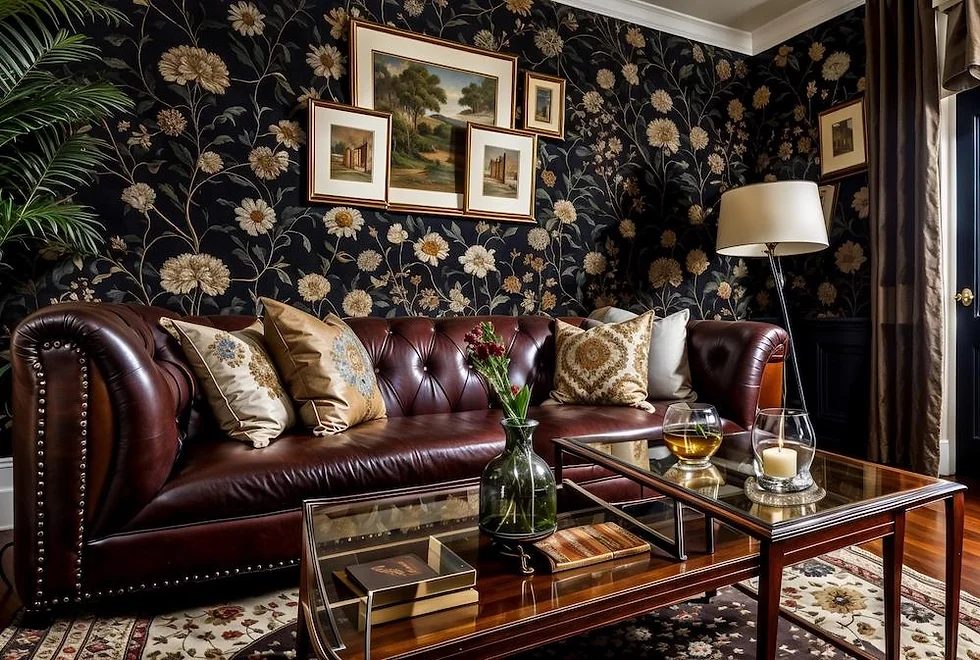
Select lighting fixtures that create a warm, studious atmosphere. Antique desk lamps, brass wall sconces, and vintage chandeliers help establish the right mood. Look for pieces with patinated finishes and amber-tinted glass shades.
Layer your lighting with both task and ambient options. Include candlesticks and lanterns for additional atmospheric lighting. The goal is to create pools of warm light perfect for reading while maintaining mysterious shadows in corners.
5. Academic Artifacts

Display scholarly items that speak to various academic disciplines. Vintage globes, microscopes, telescopes, and scientific instruments add authenticity to your decor while serving as conversation pieces. Choose items that appear both functional and decorative.
Arrange these pieces in thoughtful vignettes throughout your space. Mix larger statement pieces with smaller curiosities like magnifying glasses, compasses, and hourglasses. Each grouping should tell a story of intellectual pursuit and discovery.
6. Rich Textiles

Incorporate luxurious fabrics that add warmth and sophistication to your space. Choose velvet curtains, wool throws, and leather upholstery in deep, rich colors. These textiles should feel substantial and timeless.
Layer different textures to create visual interest. Add plaid or herringbone patterns through pillows and upholstery, keeping within the classic Dark Academia color palette. The combination of textures adds depth to your decor.
7. Vintage Art Collection

Curate a collection of classical artwork that reinforces the academic theme. Choose pieces featuring libraries, universities, portraits of scholars, and still life paintings. Look for works that appear to have history and provenance.
Create gallery walls mixing paintings with vintage photographs and sketches. Frame everything in dark wood or gilded frames to maintain consistency. The art should tell stories of intellectual pursuit and historical significance.
8. Writing Implements Display

Showcase traditional writing tools as decorative elements. Arrange fountain pens, inkwells, and vintage stationery in artistic displays. These items should appear ready for use while serving as beautiful objects in their own right.
Create vignettes on desks or shelves featuring these writing implements. Include leather-bound journals and wax seals to complete the scholarly atmosphere. These displays celebrate the art of traditional correspondence and academic writing.
9. Classical Sculptures

Incorporate reproductions of classical sculptures and busts. Place these pieces on pedestals, shelves, or mantels to add a traditional academic feel. Choose pieces that reference Greek and Roman mythology or historical figures.
Mix different sizes and materials, from small bronze figures to larger plaster busts. These sculptural elements add gravitas to your space while referencing classical education and artistic traditions.
10. Antique Mirrors

Add vintage mirrors with ornate frames to reflect light and create depth. Choose pieces with aged glass and patinated finishes that suggest history. These mirrors should serve both functional and decorative purposes.
Position mirrors to reflect natural light and create interesting visual perspectives. Group smaller mirrors together or use one large statement piece to anchor a wall. The aged quality of vintage mirrors adds to the historical atmosphere.
11. Library Ladder Features

Install rolling library ladders as both functional elements and architectural features. Choose designs in dark wood with brass hardware that complement your bookcases. These ladders add vertical interest while providing access to high shelves.
Ensure the ladder’s design matches your overall aesthetic. When not in use, position it at an angle that creates visual interest. The ladder becomes a sculptural element that reinforces the library atmosphere.
Pro Tip: Create depth in bookshelves by placing some books vertically and others horizontally, using vintage trinkets as bookends.
12. Desk Accessories

Curate a collection of vintage desk accessories that combine function and beauty. Include brass letter openers, book stands, paperweights, and desk clocks. These items should appear well-used but well-maintained.
Arrange accessories thoughtfully to create organized work surfaces. Mix materials like brass, wood, and leather to add visual interest. Each piece should contribute to both the aesthetic and functionality of your workspace.
13. Window Treatments

Select heavy curtains or drapes that frame windows dramatically. Choose materials like velvet or damask in deep colors that complement your overall palette. The window treatments should feel substantial and traditional.
Layer window coverings with sheers to control light levels. Add tiebacks with tassels or brass hardware for additional detail. The goal is to create a sense of grandeur while maintaining practical light control.
14. Reading Nooks
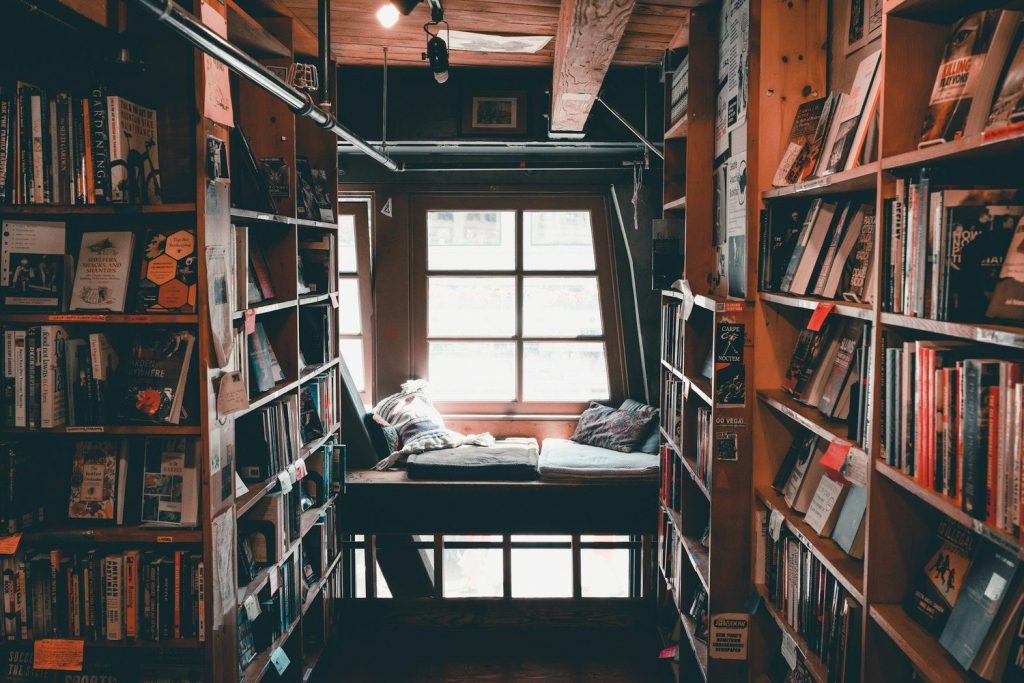
Create cozy corners dedicated to reading and contemplation. Position comfortable chairs near windows or bookcases, adding reading lamps and side tables for books and beverages. These spaces should feel intimate and inviting.
Add soft throws and cushions for comfort. Include a small table for tea or coffee service. The reading nook should be a retreat within your scholarly space.
15. Literary Collections

Display carefully curated collections of leather-bound books and first editions. Group books by author, subject, or color to create visual impact. These collections should appear thoughtfully assembled over time.
Include both classic literature and academic texts. Create small themed collections throughout your space. The books should appear accessible rather than purely decorative.
16. Natural Specimens

Incorporate preserved botanical specimens and natural history collections. Display pressed flowers, mineral samples, and preserved insects in vintage cases. These elements add scientific interest while connecting to academic tradition.
Create organized displays that mimic museum collections. Include proper labels and classification cards for authenticity. These specimens add an element of natural history to your decor.
Related Guide: 20 Creative Bathroom Accessories Ideas
17. Period Hardware

Update cabinet hardware and door fixtures with period-appropriate pieces. Choose brass, bronze, or aged iron pieces that complement your furniture. These small details contribute to the overall historical feel.
Match hardware finishes throughout your space. Include substantial door knockers and vintage doorknobs. These elements add authenticity to your Dark Academia aesthetic.
18. Globe Collection

Display a collection of vintage globes in varying sizes and styles. Include both terrestrial and celestial globes to add scientific interest. Position these pieces at different heights to create visual movement.
Mix floor-standing globes with smaller desk versions. Look for pieces with aged patinas and interesting stands. Globes serve as both educational tools and sculptural elements.
19. Traditional Rugs

Layer vintage-style rugs to add warmth and pattern to your floors. Choose Oriental or Persian designs in deep colors that complement your palette. These rugs should appear gently aged rather than worn out.
Overlap different sizes and patterns to create interest. Ensure rugs are properly sized for your spaces. The combination of patterns and textures adds depth to your rooms.
20. Wall Paneling
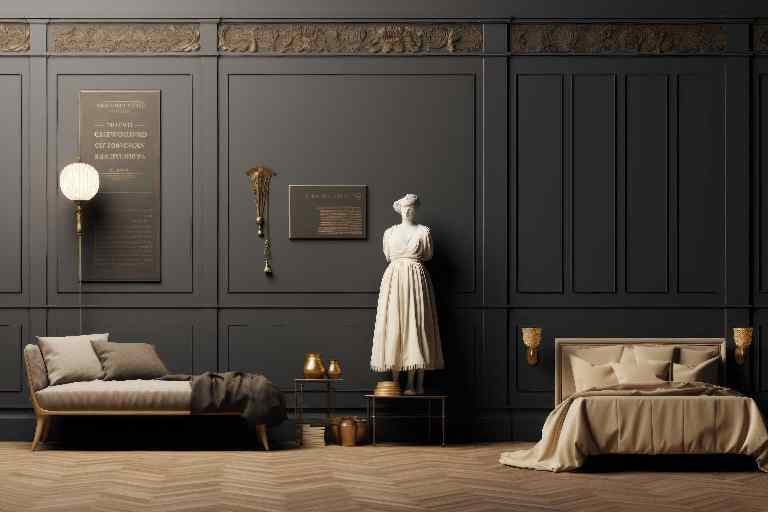
Install or paint wall paneling to add architectural interest. Choose dark woods or deep colors that create a formal atmosphere. The paneling should appear substantial and traditional.
Consider wainscoting or full-wall panels depending on your space. Add molding details for additional depth. This architectural element helps create an authentic period feel.
21. Letter Writing Station

Create a dedicated space for traditional correspondence. Include a writing slope or secretary desk with compartments for stationery and stamps. This area should celebrate the art of letter writing.
Stock the station with quality paper, envelopes, and writing tools. Add a comfortable chair and good lighting. The space should inspire thoughtful communication.
22. Clock Collections

Display vintage clocks and timepieces throughout your space. Mix grandfather clocks with smaller mantel and desk versions. Choose pieces with visible mechanisms and traditional designs.
Create groupings of different clock styles. Ensure at least some are functional. These pieces add both visual interest and a sense of history.
23. Library Card Catalogs

Incorporate vintage card catalogs as storage and decor elements. Use these pieces to organize small collections or office supplies. The drawers should appear authentic to their original purpose.
Maintain original hardware and labels where possible. Position catalogs where they’re both decorative and functional. These pieces add authentic library character to your space.
24. Reading Lights

Install adjustable reading lights in strategic locations. Choose brass or bronze fixtures with articulating arms. These lights should provide both task lighting and period ambiance.
Position lights near seating areas and desks. Include both wall-mounted and free-standing options. The lighting should support both function and atmosphere.
25. Academic Calendar
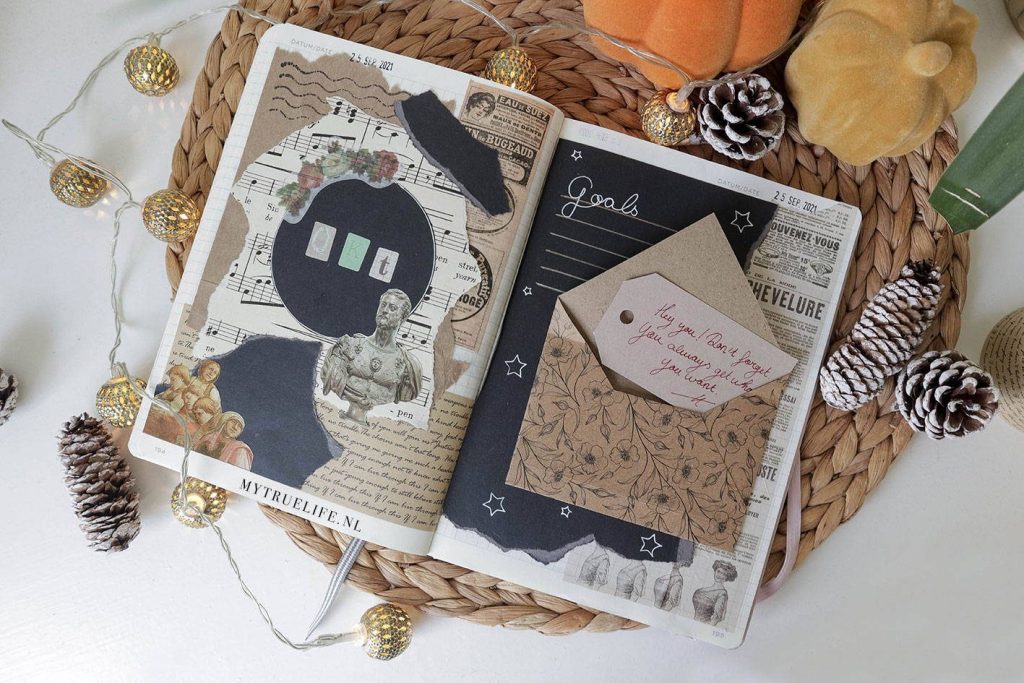
Create a scholarly calendar display using vintage frames or cases. Include important dates and deadlines in traditional calligraphy. The calendar should appear both functional and decorative.
Update regularly to maintain its practical use. Add academic motifs and details to the design. This element combines practicality with period style.
26. Music Corner

Set up a space dedicated to classical music appreciation. Include a vintage record player or radio, sheet music displays, and musical instruments. This area should celebrate musical education and enjoyment.
Arrange instruments as decorative elements when not in use. Display classical music collections thoughtfully. The space should invite both listening and performance.
27. Portrait Gallery

Create a gallery wall featuring vintage portraits and photographs. Choose images that evoke academic and intellectual history. Mix formal portraits with candid scholarly scenes.
Frame pieces consistently for cohesion. Group images thematically or chronologically. The gallery should tell stories of intellectual pursuit through time.
28. Tea Service Station
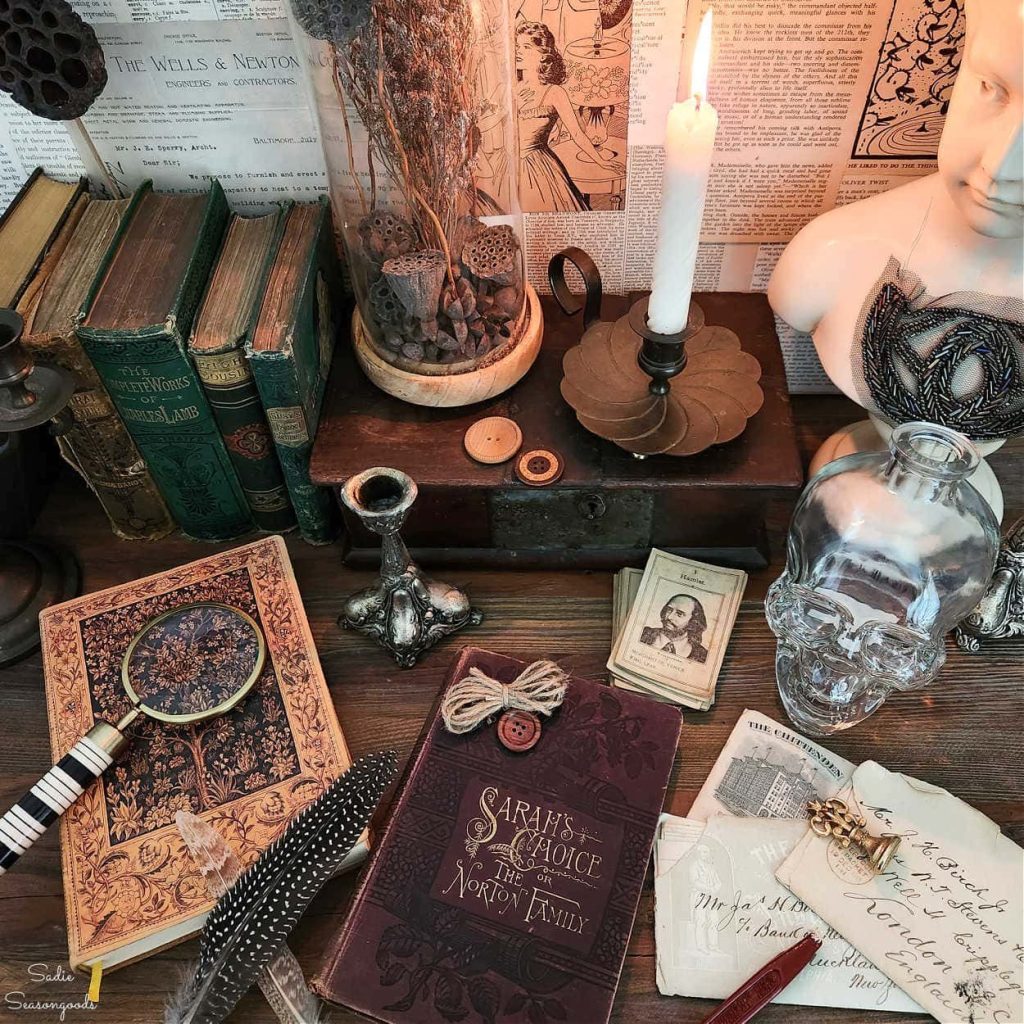
Establish a traditional tea service area with vintage serving pieces. Include a proper tea set, brewing equipment, and storage for various teas. This station should feel both elegant and practical.
Arrange items on a vintage tray or cart. Include proper cups and saucers for serving. The setup should encourage scholarly discussions over tea.
29. Book Storage Solutions

Develop creative solutions for storing and displaying books beyond standard shelving. Include reading stands, book cradles, and vintage magazine racks. These elements should protect books while keeping them accessible.
Mix different storage types throughout your space. Include proper bookends and supports. The solutions should appear both practical and aesthetically pleasing.
30. Vintage Office Equipment

Display antique office equipment as decorative elements. Include typewriters, adding machines, and other traditional tools. These pieces should appear well-maintained and potentially functional.
Create vignettes mixing different types of equipment. Position pieces where they might have been used. The equipment adds industrial character to your scholarly space.
31. Reading Glasses Collection

Display vintage reading glasses and cases as decorative elements. Include lorgnettes, pince-nez, and traditional frames. Arrange these pieces in interesting ways that suggest regular use.
Create small groupings on desks or shelves. Include vintage cases and cleaning cloths. These accessories add personal touches to your decor.
Ambiance Tip: Layer different heights of candles in antique holders to create dynamic lighting without relying on electricity.
32. Map Storage

Develop proper storage and display solutions for vintage maps and charts. Include map cases, tubes, and flat files. These storage pieces should protect while displaying your collection.
Make maps accessible for viewing and study. Include proper handling tools and supports. The storage should appear both practical and decorative.
Related Guide: 40 Stunning Cozy Boho Bedroom Ideas
33. Scholar’s Desk Setup

Create an ideal work surface with traditional desk accessories. Include desk blotters, pen rests, and paper organizers. The setup should support serious academic work.
Arrange tools efficiently for regular use. Include proper lighting and ergonomic support. The desk should inspire focused study and writing.
34. Latin Phrases

Incorporate classical Latin phrases as decorative elements. Include wall decals, framed quotes, or carved inscriptions. Choose phrases that reflect academic traditions and wisdom.
Position text elements thoughtfully throughout your space. Include translations where appropriate. These elements add classical authority to your decor.
35. Historical Documents

Display reproductions of historical documents and manuscripts. Include maps, letters, and academic certificates. Frame these pieces appropriately for preservation.
Create themed collections of related documents. Include proper archival materials. These displays add historical context to your space.
36. Reading Tables

Position substantial reading tables in communal areas. Choose heavy wooden tables that can support multiple readers and books. These pieces should encourage shared study and discussion.
Include proper lighting and seating. Add small details like book stands and paperweights. The tables should serve as gathering points for intellectual exchange.
37. Archival Storage

Include proper storage solutions for documents and collectibles. Choose acid-free boxes, folders, and albums. These elements should protect while remaining aesthetically pleasing.
Label storage clearly but elegantly. Maintain organization systems that make sense. The storage should appear both functional and traditional.
38. Desktop Globes

Position small desk globes as functional sculptures. Include both modern and vintage pieces for comparison. These elements should encourage geographical exploration.
Mix different styles and sizes. Position globes near study areas. These pieces add both education value and visual interest.
39. Book Props
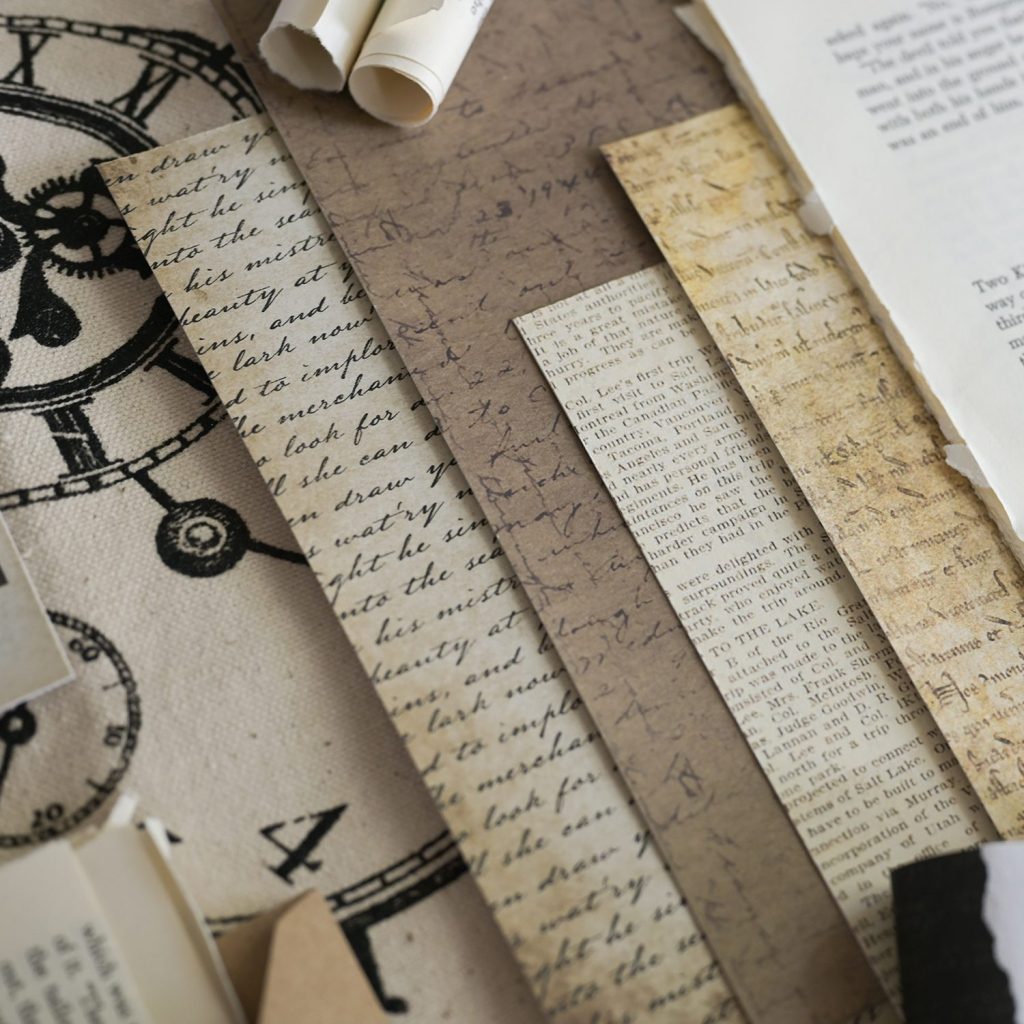
Include proper supports and props for displaying open books. Choose carved wooden or brass stands that protect bindings. These elements should appear both functional and decorative.
Position props thoughtfully throughout your space. Include different sizes for various books. The supports should enhance book displays while protecting them.
40. Seasonal Touches

Rotate seasonal academic decorations throughout the year. Include traditional educational motifs and natural elements. These changes should maintain the scholarly atmosphere while acknowledging time’s passage.
Adjust displays to reflect academic calendars. Include subtle holiday elements when appropriate. These touches keep your space dynamic while maintaining its academic character.
Conclusion
Dark Academia decor transcends mere trend status – it’s a thoughtful approach to creating spaces that celebrate intellectual pursuit and classical beauty.
By incorporating these 40 elements, you can craft a sophisticated environment that bridges past and present. Remember that successful Dark Academia design lies in the details: each piece should contribute to a narrative of scholarly dedication while maintaining an inviting atmosphere for modern living.
Whether you implement a few key pieces or fully embrace the aesthetic, these ideas will help you create a space that inspires contemplation and creativity.

